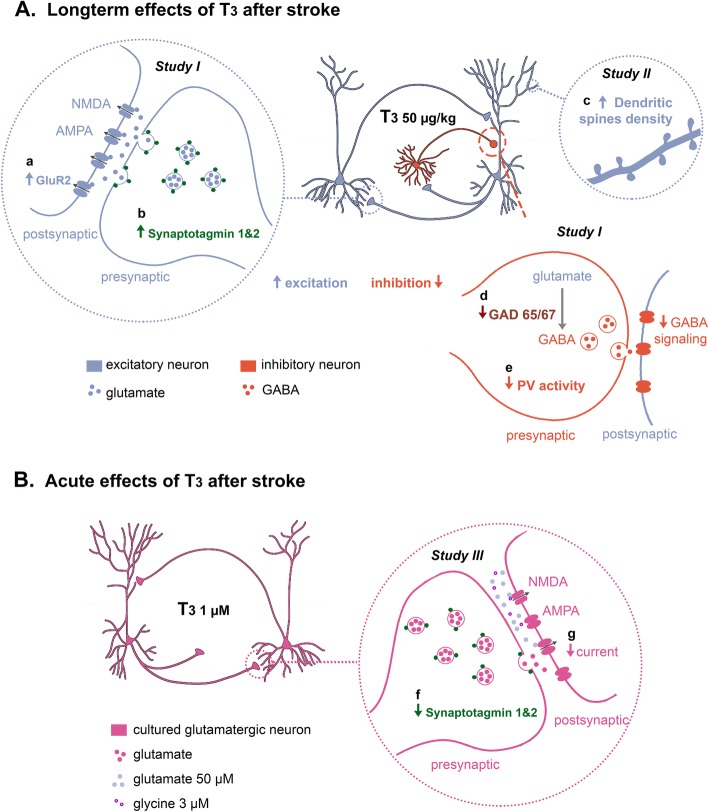Fig. 7.
Proposed mechanisms of homeostatic regulation of neurotransmission by T3. (A) After photothrombosis (PT), administration of T3 50 μg/kg for 14 days modulates pathways during the recovery period after stroke involved in reorganization of neuronal circuits and synaptic plasticity, to balance excitation and inhibition ratio. a T3 increases levels of post-synaptic glutamate receptor 2 (GluR2) subunit in AMPA receptors in the peri-infarct area and b increases levels of synaptotagmin 1&2, increasing the probability of neurotransmitter release. c T3 increases dendritic spines density in the ipsilateral and contralateral regions. d T3 decreases tonic GABAergic signaling in the peri-infarct area by a decrease in the levels of GAD 65/67 and e reduced parvalbumin (PV) activity. (B) In an acute model of cerebral ischemia and hyperexcitability, f in glutamatergic neurons pre-treated with T3 at 1 μM for 48 h there is a decrease in levels of synaptotagmin and g T3 modulates neuron membrane properties with the balance of inward glutamate ligand-gated channels currents

